Dental treatment
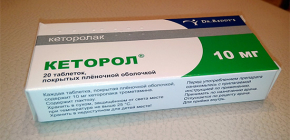
Ketorol is a well-known pain medication that helps even in situations with very severe and acute toothache. It, like Ketanov, is often prescribed by dentists to patients who have pain after a complex or extensive manipulation for a certain period of time, or in cases where treatment is not possible without urgency, and a patient with acute pain needs to wait for a doctor's appointment. Given the strength and side effects of the drug, it must be used in strict accordance with the instructions. It is about the pain relief with the help of Ketorol and the rules for its use that we will talk about later, and also see how those who have already tried it in action speak about the effectiveness of the drug.
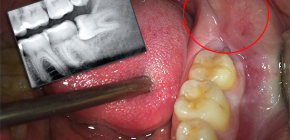
Teething of the lower wisdom tooth (less often - the upper one) is almost always accompanied by severe pain. And painkillers here will not always help, since inflammation of the gums above the wisdom tooth often develops into purulent edema, sometimes with pus moving inside the jaw, up to the development of sepsis (blood poisoning) with a possible fatal outcome. In the past, dental surgeons used excision of the gingival hood above it for emergency treatment of pains from a teething wisdom tooth, but the statistics of failures subsequently led to a change in treatment approaches. We can talk about what you can do at home to anesthetize your gums, as well as what can be expected in the clinic if you go there with pain from a growing wisdom tooth ...
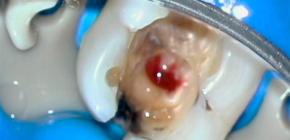
Chronic fibrous pulpitis does not cause acute and unbearable pain, creating the effect of imaginary well-being. As a rule, in a short period of time, structural degenerations of the “nerve” inside the tooth end with gangrene (necrosis) of all or part of the pulp with the formation of pus and its exit towards the gums. If you say that this is an undesirable phenomenon - it does not say anything, so such suppuration is fraught with very dangerous complications. That is why it is so important to “catch” a tooth in the stage of fibrous pulpitis in time, in order to manage to do everything necessary to preserve it ...

Unconscious parents of babies are still convinced that there is no point in treating carious milk teeth, since they will still fall out. When at the most inopportune moment, for example, on a holiday, the child suddenly begins to complain of acute toothache, then mothers and fathers have to choose: either feed the baby with pills (“chemistry”) for pain relief, or consult a pediatric dentist for emergency care. You should know that pulpitis in milk teeth develops rapidly, often leading to suppuration of the gums in just a day. In Russia, deaths from complications of pulpitis in children are annually recorded - abscesses, phlegmon, sepsis. Let's look at how pulpitis of milk teeth is treated in modern dental clinics, as well as what complications and medical errors are possible and how this can threaten a child.
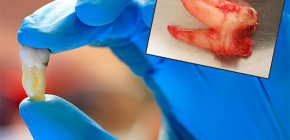
People of old school are often afraid to remove their teeth in general, including wisdom teeth. And often this is due to memories of how during the Soviet era, dental surgeons for a long, very painful and very difficult to remove using a special chisel and hammer. It is clear that pulling out a wisdom tooth was very painful, especially in difficult cases, when it had to be taken out of the gums literally in pieces.However, today dentistry has stepped far forward and has a set of necessary techniques and tools that allow the wisdom tooth to be removed as painlessly, comfortably and without consequences as possible, as well as the prevention of possible complications. We will talk more about how the procedure is carried out and how painful it is to remove wisdom teeth today ...
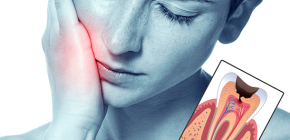
In most cases, severe pulsating pain in the tooth indicates the development of pulpitis. In such a situation, in no case can you hope that painkillers will help to completely solve the problem, and the pain will gradually disappear. An urgent need to treat a tooth, not leading to complications of pulpitis, some of which can even threaten a person’s life. Modern dentistry allows for high-quality instrumental and hardware treatment of pulpitis according to new methods and almost without pain (especially when compared with Soviet times). What is the advantage of modern treatment methods, what do they consist of and what are the principles of pricing for the treatment of pulpitis - this will be discussed later.
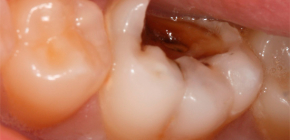
Some seriously believe that if an acute toothache has passed, it means that the tooth itself “cured” itself. In reality, serious structural changes occur inside the tooth that are not visible to the eye. Often the result is the development of chronic pulpitis, which is a very insidious disease. What chronic pulpitis is, what symptoms it manifests itself, how it is treated and how to prevent its complications will be discussed further.
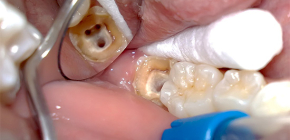
As a rule, it is pulpitis that makes even the most “patient” people turn to the dentist for emergency care. As a result of infection of the pulp chamber and prolonged squeezing of the tooth “nerve” due to its edema, intolerable pains are provoked. Moreover, often pulpitis results in diseases that lead either to tooth extraction and costly prosthetics, or even serious health problems in general, even death.
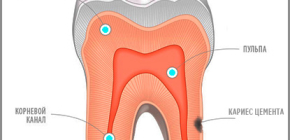
Caries of root cement is a serious problem for many people, and this is largely due to the specifics of carious destruction under the gum, when the timely detection of pathology is quite problematic. Most people cannot independently and timely notice a root defect, especially when it develops without decay by caries in the cervical region - on enamel visible to the eye. The latent carious process often leads to difficult situations: the occurrence of complications of caries - pulpitis and periodontitis, up to the breaking off of the crown of the dead tooth and its removal. Thanks to modern diagnostic capabilities and the treatment of cement caries, methods for preserving teeth for a long time have appeared. What techniques and materials are used, risk factors for the development of this pathology, the choice of a reliable clinic for treatment - we will talk about this and much more.
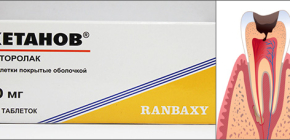
For patients with acute toothache or after complex manipulations, dentists often prescribe Ketanov - a drug that is effective even with severe pain. Knowing this, many are trying to use Ketanov at home on their own, without a doctor's prescription. Given the contraindications and side effects of this remedy, such self-activity can be very dangerous. Let's figure it out together in what cases and how to properly take Ketanov to relieve toothache, and when it is better to completely abandon the use of this drug.
